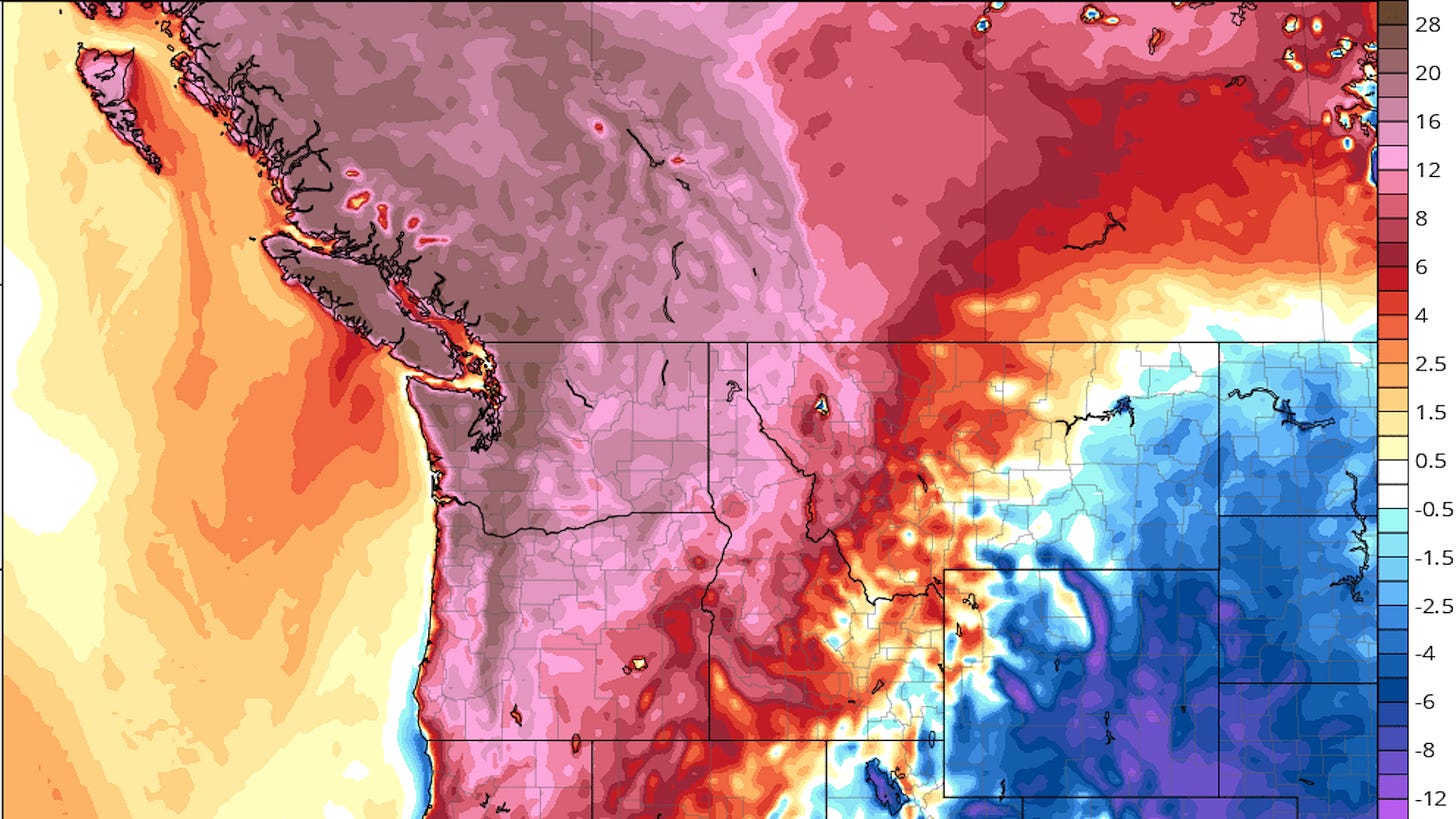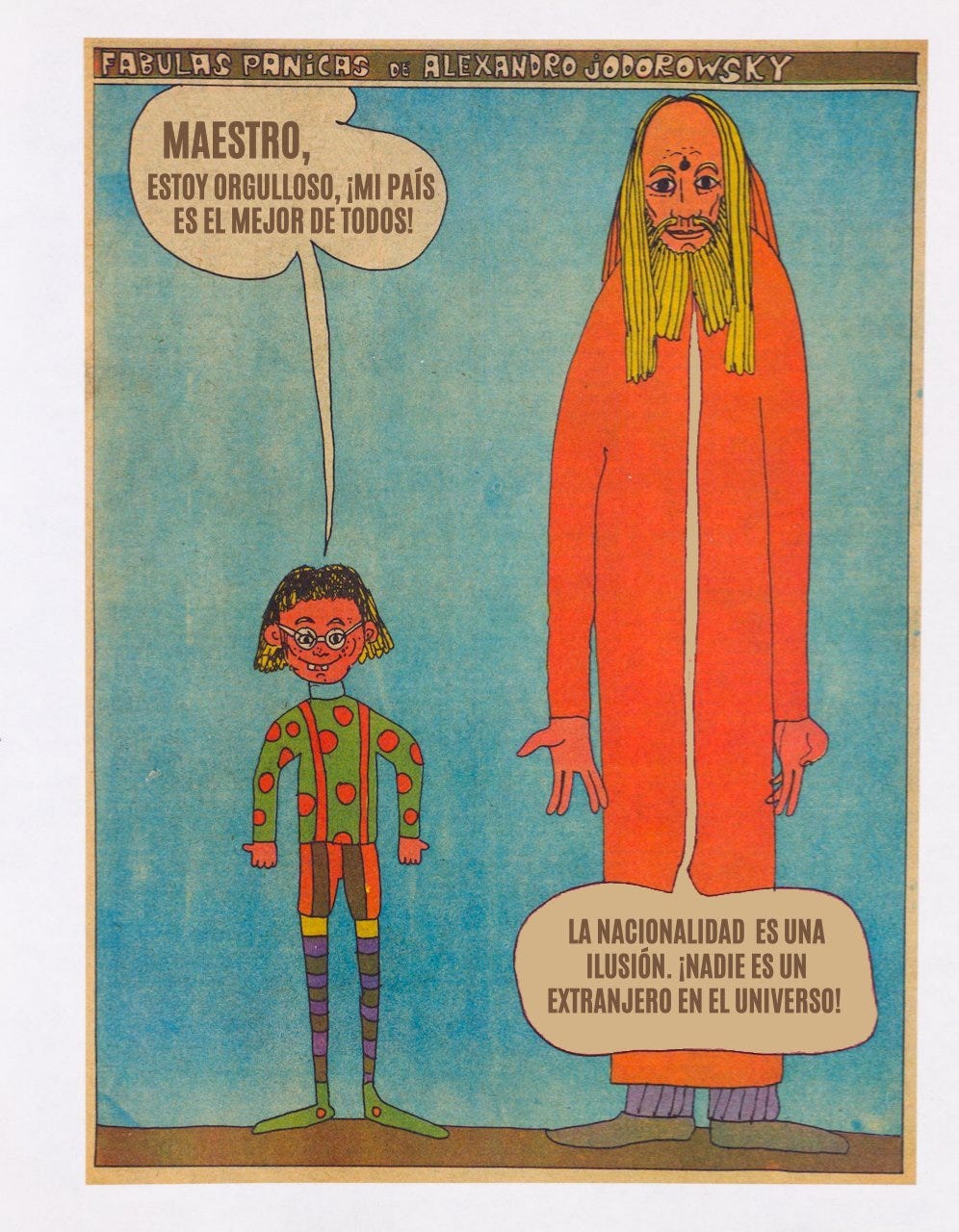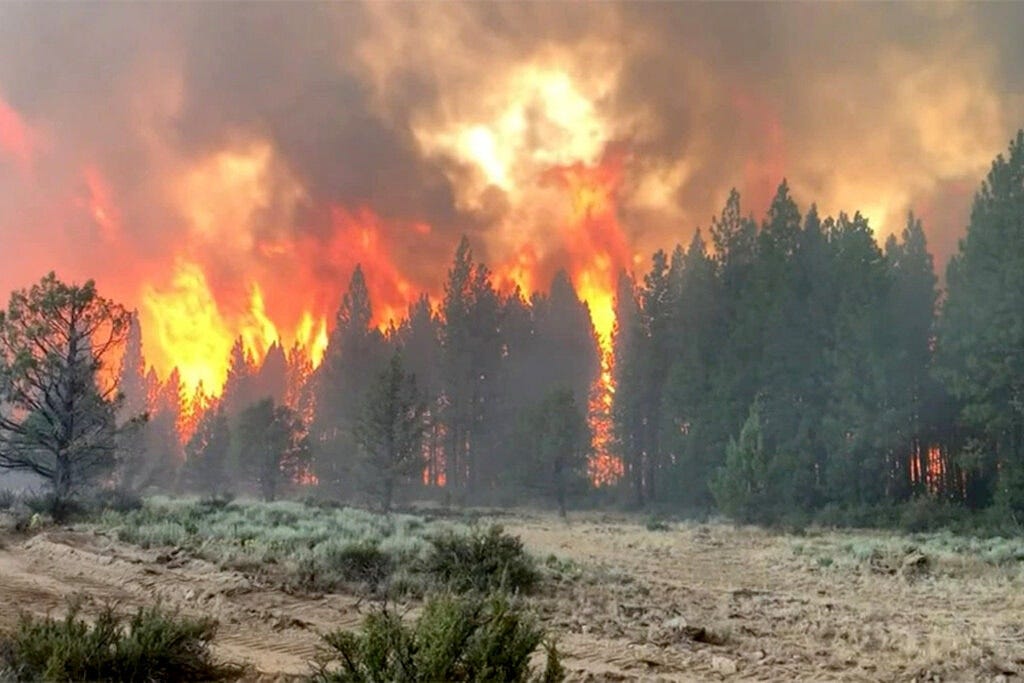BACK TO NORMAL
ISSUE VIII
Note: this issue will be cut off in your e-mail; click the title above to view in your browser, on SUBSTACK.
END TALK — 7/2021
Welcome to END TALK, and welcome to summer 2021, possibly the hottest summer yet experienced during mankind’s existence on planet Earth, but hardly the hottest we will experience for the remainder of our species’ tenure here. Welcome BACK TO NORMAL—today is Friday, July 16, 2021.
Back to normal… this concept was the selling point for the Biden electoral coalition, as well as the theoretical promise to be realized by ending the pandemic. Well, the pandemic has not ended, and while the administration did not achieve its goal of vaccinating 70% of Americans by the 4th of July, that’s ok!—because we have collectively decided to pretend they did.
It seems that normalcy is more a collectively-agreed-upon state of acceptance than any objective metric for measuring external reality.
In a way, though, I think even the most hardcore of deniers recognize something has changed. Whether acknowledged or not there is a palpable sense that we have shifted onto new terrain—as one example, consider the increased, almost obsessive focus on rising crime.
What is troubling is that this awareness is largely unconscious—or when conscious, is distorted, divorced from any attempt to seriously reckon with the roots of the issues we face, producing a sort of nihilism—well, this is just the way things are; circumstances cannot be meaningfully changed.

Specific markers help to reveal changing times—a recent symbolic one was the death of former Defense Secretary and unconvicted war criminal Donald Rumsfeld, a man who was central in heralding in the era in which we now live. I wrote a few words about his passing:
Rumsfeld is absolved, because everyone in power is absolved (except for the rare scapegoat, into whom is distilled some vague and dislocated societal sense of collective sin). In doing so the country is absolved, its agency denied, instantly forgiven, permitted no reckoning with the consequences of the horror and evil underlying it, the destruction it has wrought—and the perverse criminality of the men and women who do after all direct it is diluted into bureaucratic hum.
Rumsfeld is a reasonable case study in what perversely constitutes normalcy because he was so heavily embedded in one of the single greatest crimes and catastrophes of this century, the invasion of Iraq, an event which at the time was perceived (at least by some) as highly abnormal, and yet has since been subsumed into that same banality of things being the way they are—collective societal inertia, normalcy, acceptance, etc.—as everything else.
Years after the invasion, in an atmosphere in many ways defined by its legacy and after-effects—a present of rising fascism, climate collapse, economic stagnation, perpetual war—the hope might’ve been that COVID would shock us out of complacency. In retrospect this idea was ridiculous, at least en masse. Paradoxically (in a sense), the pandemic has simply reaffirmed a collective acceptance of and need for normalcy, deathfully wedded to illusions about the sustainability of the present. Better things be NORMAL than in crisis.
So we got what we wanted, I guess; now we have normal again (at least in the USA, at least for the moment). Our issue below offers a scattering of media with that tenuous present in mind. We begin with a climate roundup focused on the abnormal (new normal?) situation in North America and end with some excellent music and reading suggestions. In the middle we include two new sections:
Brief (Film) Reviews, attempts to distill comprehensive (in this case) movie reviews into a mere 1-2 sentences
Sundays are for baking, in which we share an excerpt from contributor ET Perry’s baking newsletter (sign up here)
NORMAL, FOLKS—WELCOME BACK!
THANK YOU FOR READING. PLEASE, SUBSCRIBE/SHARE.
CLIMATE ROUNDUP
Atmospheric CO2 (recorded 7/14/21 in Mauna Loa, Hawaii): 417.55 ppm
Hardly feels necessary to keep producing these graphs—but maybe it is, as this article from early June describes how CO2 levels have hit yet another atmospheric record and “researchers have estimated that there hasn’t been this much of it in the atmosphere for millions of years.”
The effects are visceral in a way that would have been intellectually shocking a few years ago and are physically shocking in the present. Recent North American climate news of note has centered around the devastating and entirely unprecedented heat wave in the Pacific Northwest—though this coverage has receded in the last two weeks as the brief term of our collective attention shifts—where temperatures shattered records, and the highest temperature EVER in Canada was recorded. And this was only in late June.



And of course—it’s not over:
The rest of the country has not been immune to the heat, nor other severe weather. In the Northeast we have had at least four significant heat waves of varying intensity thus far this year. Below, from early June:



While overshadowed by the Pacific Northwest heat wave, Michigan simultaneously suffered catastrophic flooding:
Truly unbelievable how fast this is happening. Click this LINK for recently released Google Earth time-lapses of the entire planet, consisting of over 30 years of satellite data. Disturbing, if illuminating, to watch in the related video below as cities develop and glaciers melt over only the last couple decades:
In a similar spirit, a New York Times article shows graphics of shifting baseline temperatures and average precipitation throughout the continental US over the 20th century, up to the present. Check the LINK to see the GIFs.
“There’s a huge difference in temperature over time, as we go from cooler climates in the early part of the 20th century to ubiquitously warmer climates,” [Dr. Michael Palecki, who manages the project at NOAA’s National Centers for Environmental Information] said.
The change is especially drastic between the new normals and the previous ones, from 2010. “Almost every place in the U.S. has warmed,” Dr. Palecki said.
Current drought map for the United States:
Brief Film Reviews
(While I did not necessarily set out to make this section thematically coherent, I recently watched several films that all centered on what I’d characterize as conspiracy, paranoia, and that particular legacy of the 20th century. This subject matter defines so much of the present culturally and politically—and so we focus on these themes in the reviews below.)
JFK (1991) — 3.5/5
A film about the deep state. You can draw a direct line from Jim Garrison (Kevin Costner)’s rambling—if probably accurate—courtroom testimony to QAnon.
The Parallax View (1974) — 4/5
A better film about the deep state.
The Irishman (2020) — 3/5
Objectively not good but inadvertently—particularly in the way it is not good, and the ridiculous de-aging effects—well-distills our culture, particularly film culture, our fixation on the 20th century, and the emptiness of the present & future. The final ~45 minutes (wherein Robert de Niro is aged further, and made to look even older) is extremely poignant.
The Manchurian Candidate (1962) — 4/5
SPOILER ALERT: In this film, a brainwashed former US soldier, ensnared in an elaborate conspiracy, kills a high-level US politician from a small window with a rifle. The film came out in 1962, by the way.
Sundays are for baking
Our contributor ET Perry has a food & recipe newsletter called Sundays are for baking. Check it out and subscribe (it’s free) for a new recipe in your inbox, roughly once or twice a month. Below we re-run a partial recipe for challah.
“tell me challah-bout it”
My mom is my guide in all things baking; she’s been baking since she was a pre-teen, and she makes amazing challah! Last month I asked her to show me how to make it.
The keys to great challah are kneading properly and braiding the loaf mindfully. Challah is an enriched bread. It gets its delicious, full flavor and smooth, fluffy texture from additional honey and eggs. I love to eat it on its own or with a bit of butter, and obviously it makes for amazing French toast.
Ingredients: (for two medium-large loaves, or one very large loaf)
1 packet (~2 1/4 teaspoons) yeast —> we used instant yeast; active dry yeast works as well
1 tablespoon sugar
1/4 cup warm water
1 large egg + egg for egg wash
3 large egg yolks
1/3 cup good honey
2 tablespoons oil + more for greasing —> use the lightest oil you have - ex, vegetable or canola oil; do not use olive oil or butter
1 1/4 cups warm water
2 teaspoons salt
4-6 cups flour —> we wound up using ~5 1/2 cups total; if you use too much flour, the bread will be too heavy
Visit Sundays are for baking for the full recipe & tutorial!
Recommends — (Reading)
I don’t know how I missed this Mother Jones article, in which Leland Nally called every name in Jeffrey Epstein’s infamous black book. Pretty wild read.
The truth is that the elite world that Epstein ascended into, the one I tapped into by way of the black book, is populated with hordes of loathsome, boring, untalented people living their bumbling, idiotic lives while just so happening to wield some share of the preposterous global bounty that he and the rest were after. For all the mystery surrounding Epstein’s fortune, its existence is hardly more inscrutable than the wealth of any of his other billionaire peers. He earned it the same way they all did, which is to say precisely not at all.
This wasn’t some masterful hack into the global aristocracy. It’s what everyone does. It’s what the whole thing is. There is no scam here. It’s grifters grifting grifters all the way down.

Highly, highly recommend this excellent and brief article in Counterpunch by nuclear historian Bo Jacobs, which takes apart an incredibly short-sighted essay by Jacobin editor Bhaskar Sunkara that argued for an expansion of nuclear power:
I too wish that the things that the nuclear industry says about itself were true—I wish it was green and renewable. I wish that there weren’t multiple uranium mining sites around the world with thousands of tons of uranium tailings abandoned and open to the elements, continuing to harm the health of generations born long after mining ceased. I wish that it didn’t take immense, carbon-intensive mining projects to extract uranium from the Earth, and then again to “deposit” the spent nuclear fuel from reactors back half a kilometer underground. Estimates before construction began at Onkalo spent fuel repository in Finland were that the site would entail a “half-billion-euro construction project [that] will generate some 2,500 person years of employment,” and would take 100 years to complete. That is just to contain the spent fuel from five nuclear power plants. The United States, by contrast, has 94 commercial nuclear power plants. There is still no actual plan for the astonishingly large and carbon-intensive site it will take to bury the more than 140,000 metric tons of spent nuclear fuel, with some hope of containing it for thousands of generations of future human beings. This doesn’t include the thousands of tons of spent nuclear fuel from the nuclear reactors operated by the US military to provide the fissile cores of more than 70,000 nuclear weapons during the Cold War.
(Music)
Digging this track by Stellium, the new project from Devojka (of Operators), Dan Boeckner (Operators/Wolf Parade), and Tim Kingsbury (Arcade Fire). Check it out and their Patreon for new songs:
I hope to see Hallelujah The Hills’ upcoming show in Charlestown, MA (postponed to 7/24). I first heard this Boston-area band in high school, likely on 101.7 WFNX (RIP to that station, by the way, which was bought by Clear Channel in 2012). Their 2019 album, I’m You, is excellent:
Going one more step down the rabbit hole of Boston bands, I’ve recently been re-listening to Soft Pyramids, another band I almost certainly first heard on WFNX, probably on the Sunday night local music show. Still dig the electro-indie sound of this group. Pretty sure I saw them at TT the Bear’s in Cambridge (also RIP) circa 2010-11, but I might’ve got there too late and missed the set. They don’t look too active via social media, but this 2018 album of theirs, Lowrey Go Go, is good. Favorite track: God Damn Grief.
Finally—just about a year ago we (Denmark) released the two songs below, Everything Is Alright / The Runaround. The artwork is borrowed from Francisco Goya’s Perro semihundido, created circa 1820. Something about its color and ominousness just felt right for this music. Have a listen, download, and follow our Instagram for updates.
THANKS FOR READING. Want to connect? Write to ENDTALKPOD@GMAIL












